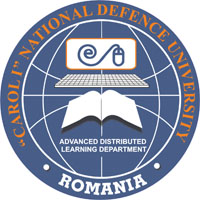CREATING INTERACTIVE ANIMATIONS FOR SCHAPING KNITTING LESSONS
CREATING INTERACTIVE ANIMATIONS FOR SCHAPING KNITTING LESSONS
Author(s): Mariana URSACHE, Dorin DANSubject(s): Education
Published by: Carol I National Defence University Publishing House
Keywords: animated graphical interface; interactive knitting schemes; shaping knitted fabrics; widening; narrowing
Summary/Abstract: The new generation of computerised flat knitting machines has been designed with extensive fully fashioning abilities and can combine its higher productivity, pattern flexibility and modern controls with the economical advantages of this process. The aim of this work is to create and use an animated graphical interface with interactive objects, in order to help the student to understand quickly and correctly the aspects related to the definition of certain terms for shaping the knitted fabrics and to use the interactive description of the schemes for the knitted fabrics edge contour. The interactive knitting schemes refer to the two shaping methods: widening and narrowing. The widening is exemplified by three methods: outside widening - increases the stitch one by one; split knit widening - knitting width is widened by stitch transfer and the hole is filled by split knit; interlock widening - increases with more than one stitches at once. The narrowing is exemplified by three methods: outside narrowing - narrows the stitches by stitch transfer; bind off - transfers the stitches to the next loop from the edge sequentially; cast off method - is performed after knitting two centimetres with waste yarn. The interactive method of teaching presented in this paper represents the outcome of the process of the innovating the working methods applied in the knitting laboratory of the Faculty of Textiles, Leather and Industrial Management of Iaşi. The drawings were made with Corel Draw graphics application and the animations and the interactivity were made with Corel RAVE. The program resulted is portable and it may be used online or offline on any computer system.
Journal: Conference proceedings of »eLearning and Software for Education« (eLSE)
- Issue Year: 11/2015
- Issue No: 03
- Page Range: 556-561
- Page Count: 6

